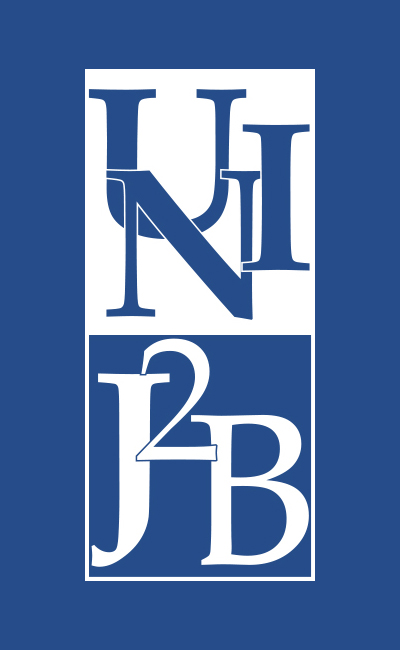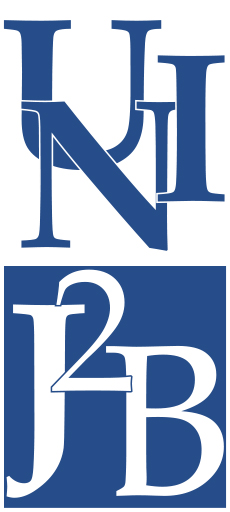Guidelines for Authors
AIM AND SCOPE
UniCath Journal of Biomedicine and Bioethics is a peer-reviewed, open access journal that uses the Diamond Open Access model, published by Catholic University of Croatia, Zagreb, Croatia;
UniCath Journal of Biomedicine and Bioethics is published in English two times a year and aims to publish original scientific contributions in Biomedicine and related science.
Guidelines for Authors [.pdf]
Affirmation of Authorship Form [.docx]
Reviewer's form [.doc]
Sample Title Page Format [.pdf]
SUBMITTING A MANUSCRIPT
Manuscripts have to be written in English and in concordance with the ICMJE Recommendations: http://www.icmje.org/recommendations/. Submission of a manuscript implies that the manuscript has not been published before or under consideration for publication anywhere else. Submitted manuscript will be screened for plagiarism. The manuscript, together with the Covering letter and Author Copyright Agreement, should be sent as an attachment by e-mail to the following address: unij2b@unicath.hr
AUTHORSHIP
Everyone designated as authors should meet all four criteria for authorship, and those who meet the four criteria should be identified as authors. The ICMJE recommends that authorship be based on the following 4 criteria:
- Substantial contributions to the conception or design of the work; or the acquisition, analysis, or interpretation of data for the work;
- Drafting the work or revising it critically for important intellectual content;
- Final approval of the version that is to be published;
- Agreement to be held accountable for all aspects of the work in ensuring that questions related to the accuracy or integrity of any part of the work are appropriately investigated and resolved.
ARTICLE TYPES
Manuscripts published in the UniCath Journal of Biomedicine and Bioethics are expected to be submitted to original research articles, reviews, case reports and Letters to the Editor. Contributions will be considered for the following categories:
- Original research: no longer than 4000 words, including the abstract, text and references
- Review: no longer than 4500 words, including the abstract, text and references
- Professional paper: no longer than 2500 words, including the abstract, text and references
- Case report: no longer 2000 words, including the abstract, text and references
- Letter to the Editor: no longer than 1000 words, including, text and references
PREPARATION OF THE MANUSCRIPT
All authors submitting to UniCath Journal of Biomedicine and Ethics should conform to the Uniform Requirements for Manuscripts Submitted to Biomedical Journals prepared by the International Committee of Medical Journal Editors (ICMJE). The manuscript has to be prepared as an editable Word document in a 12-point double spacing Book Antiqua font. All pages have to be numbered consecutively, starting with the title page and including the tables and figures. The manuscript submitted as the original research, should be assembled in the following sequence:
- Title and Authorship (single page)
- Abstract and Keywords (single page)
- Introduction
- Materials and methods
- Results and discussion
- Conclusion
- Acknowledgments
- Conflict of interest
- References
- Tables (one table per page)
- Figures (one figure per page)
There are no strict formatting requirements for other forms of manuscript, but all manuscripts must contain the essential elements needed to evaluate a manuscript: abstract, author affiliation, figures, tables, funder information, references. Further details may be requested upon acceptance.
The criteria for the acceptance of papers are: originality, quality of work and clarity of style. Use clear and concise language to communicate your ideas effectively.
Once you have finished writing, take some time to review and revise your work. Look for any errors in grammar, spelling, or punctuation. Make sure that your writing is well-organized and that your arguments are clearly presented. All papers will be reviewed by at least two experts. Editorial board will make the final decision about acceptance of a manuscript.
Title page, Abstract and Keywords
Title page
The title of an article should be clear, concise and accurately reflect the content. The study design should be indicated in the title or the abstract. Acronyms and/or abbreviations should be avoided. The name of each author should be listed and followed by a superscript corresponding to a superscript before the author’s institutional affiliation, e-mail address and Open Researcher and Contributor Identification (ORCID). Provide the full name, affiliation, mailing address and e-mail address of the corresponding author.
This author shall be responsible for communicating with the journal during the review process and after publication.
Abstract and Keywords
Abstract: Provide a structured abstract of 200 to 350 words, although in the case of a review, a structured abstract is not necessary. Minimize the use of abbreviations and do not cite references in the abstract. Reports of randomized controlled trials should follow the CONSORT extension for abstracts. An abstract should include the following subtitles:
Background: the context and purpose of the study
Aim: the main objective of the study.
Methods: how the study was conducted and which statistical tests were used. In this section, state the type of study design, place of study, relevant dates (including periods of recruitment, exposure, follow-up and data collection), sample (participants), measured variables and study tools.
Results: the main findings (the main results of the study)
Conclusions: State the conclusions (not repeating the results!) and potential implications
Title Registration: (if you have registered study protocol) information about the registration of the study protocol – registry and registration number (e.g., ClinicalTrials.gov and NCT number, link to OSF registration)
Key words: Provide a list of 3 to 6 key words that accurately reflect the content of your article. Terms from the Medical Subject Headings’ (MeSH) list of Index Medicus should be used for key words. MeSH on Demand is a tool that can automatically identify relevant MeSH terms from text.
Introduction
Introduction
Start by clearly stating the purpose of your study or research question. This will help to orient the reader and provide context for the rest of the article. Provide a brief overview of the background literature that is relevant to your study. This will help situate your research within the broader context of the field and identify any gaps in current knowledge. State the objectives or hypotheses of your study clearly. This will help guide the reader and provide a clear focus for the rest of the article.
Materials and methods
Provide enough detail to allow others to replicate the study.
It is desirable (where applicable) for this part to include the following subheadings: Study Design, Ethics, Participants, Data Collection and Study Tool, Statistical Analysis and Other (optional, depending on the study design).
Start by providing a brief overview of the study design, including the research question, hypothesis or objective.
Issue a statement that the study has obtained ethics approval, including the name of the ethics committee(s), the official number of the document, as well as a statement that the participants had given their prior informed consent. If ethics approval was not required, this must be stated and explained.
Describe the study population or subjects, including any inclusion or exclusion criteria, recruitment methods and demographics.
Provide a detailed description of the data collection process, including the procedures and instruments used to measure or collect data. Include any relevant details, such as sample size, duration of the study and any measurements taken.
Describe the statistical methods used to analyse the data, including any software or packages. Include any relevant details, such as the level of significance, assumptions and tests.
Results
The presentation and interpretation of the results should be clear and concise.
When reporting summary statistics in medical research, it is generally recommended to use two to three significant digits for effect sizes.
For measures of variability (e.g., standard deviation, confidence intervals) and measures of central tendency (e.g., mean, median, mode) use one to two significant digits.
For percentages, aim for two significant digits across the range:
• Use whole numbers if the range is 10% or more,
• Use one decimal place if the range is between 1% and 10%,
• Use two decimal places if the range is below 1%.
For test statistics (e.g., t-value) use up to one decimal place and up to two significant digits. For p-value use up to one significant digit.
Discussion
Begin by summarizing the main findings presented in the Results section. This will help to provide context for the rest of the discussion. Interpret the results in the context of the research question, hypothesis or objective. Discuss how the findings contribute to current knowledge in the field and any potential implications or applications.
Compare the results to previous studies in the field, highlighting any similarities or differences. Discuss any potential reasons for discrepancies and any limitations of the study that may impact the interpretation of the results. Provide appropriate context for the findings and avoid overinterpreting the data or drawing conclusions that are not supported by the evidence.
Highlight any strengths and limitations of the study.
Conclusion
Provide a clear and concise conclusion that summarizes the main findings of the study, the interpretation thereof, and any potential implications or applications.
Declarations
In this section, the following declarations should be provided by the authors:
Acknowledgments: List all contributors who do not meet the criteria for authorship. Acknowledge any support received (someone who provided purely technical help or a department chair who provided general support) or funding, which was not covered by the author’s contribution.
Authors’ Contributions: The authors’ declared contributions to the article should be listed according to the authorship criteria developed by the ICMJE.
Ethics Considerations: This part contains a statement that the study has obtained ethics approval, including the name(s) of the ethics committee(s) and the official number of the document, as well as a statement that the participants had given prior informed consent. If ethics approval was not required, this must be stated. These statements should also be part of the Methods section.
Funding: State the details of all sources of funding for the study. If there was no funding, this must also be stated.
Competing Interests: State any possible conflict of interest.
Data Sharing Statement/Data Availability: The authors must provide a statement that the research data associated with their paper is available, as well as the conditions under which the data can be accessed. Where applicable, a link should be added.
Ethics consideration
This part contains statement that the study obtained ethics approval, including the name of the ethics committee(s) and the official number of the document, as well as a statement that participants gave an informed consent before taking part. When ethics approval was not required, this must be stated. These statements should be a part of the Methods section, too.
Funding: State the details of all sources of funding for the study. If there was no funding, this must be stated, too.
Competing interests
State in the manuscript any possible conflict of interest. We ask authors to fill out the form that is available at the ICMJE site. The ICMJE forms should be given by the corresponding author. We also ask its reviewers to declare possible conflicts of interest related to the manuscripts under review.
References
In the Vancouver style, references are cited using numbers in parentheses within the text, with each number corresponding to a specific reference listed in the reference list at the end of the document. References style should follow the NLM standards summarized in the ICMJE Recommendations for the Conduct, Reporting, Editing and Publication of Scholarly Work in Medical Journals: Samples of Formatted References for Authors of Journal Articles.
Data sharing statement
Authors must provide a statement that the availability of the research data associated with a paper is available, as well as the conditions under which the data can be accessed. Where applicable, link should be added.

